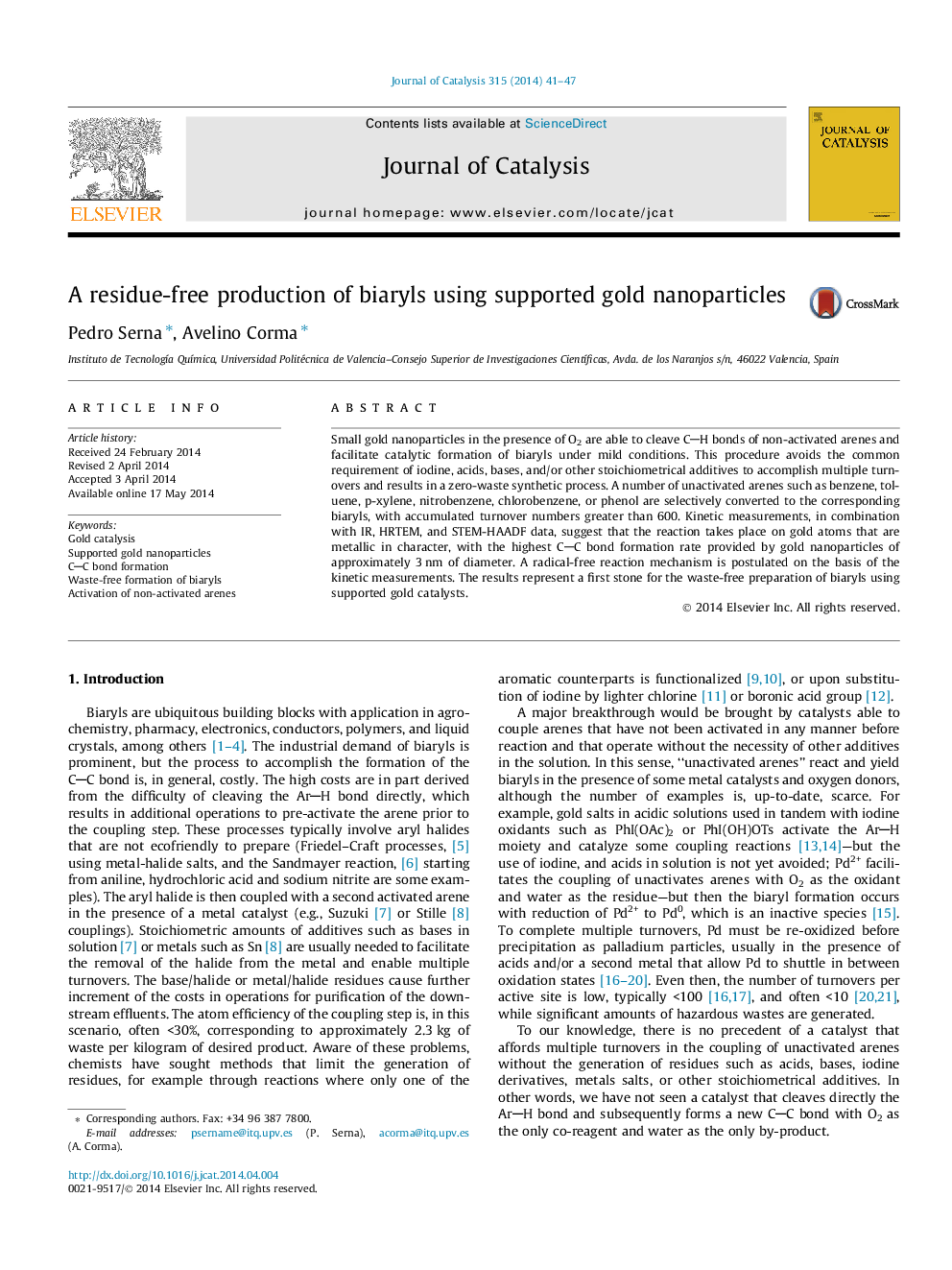| Article ID | Journal | Published Year | Pages | File Type |
|---|---|---|---|---|
| 61084 | Journal of Catalysis | 2014 | 7 Pages |
•Supported gold nanoparticles activate ArH bonds in O2 to yield biaryls.•Unlike other alternatives, additives such as acid/bases, iodine, or metals in solution are avoided.•Water in the only by-product.•Multiple turnovers can be achieved under solvent-free conditions.•The catalyst can be easily regenerated by calcination in air.
Small gold nanoparticles in the presence of O2 are able to cleave CH bonds of non-activated arenes and facilitate catalytic formation of biaryls under mild conditions. This procedure avoids the common requirement of iodine, acids, bases, and/or other stoichiometrical additives to accomplish multiple turnovers and results in a zero-waste synthetic process. A number of unactivated arenes such as benzene, toluene, p-xylene, nitrobenzene, chlorobenzene, or phenol are selectively converted to the corresponding biaryls, with accumulated turnover numbers greater than 600. Kinetic measurements, in combination with IR, HRTEM, and STEM-HAADF data, suggest that the reaction takes place on gold atoms that are metallic in character, with the highest CC bond formation rate provided by gold nanoparticles of approximately 3 nm of diameter. A radical-free reaction mechanism is postulated on the basis of the kinetic measurements. The results represent a first stone for the waste-free preparation of biaryls using supported gold catalysts.
Graphical abstractFigure optionsDownload full-size imageDownload high-quality image (125 K)Download as PowerPoint slide
